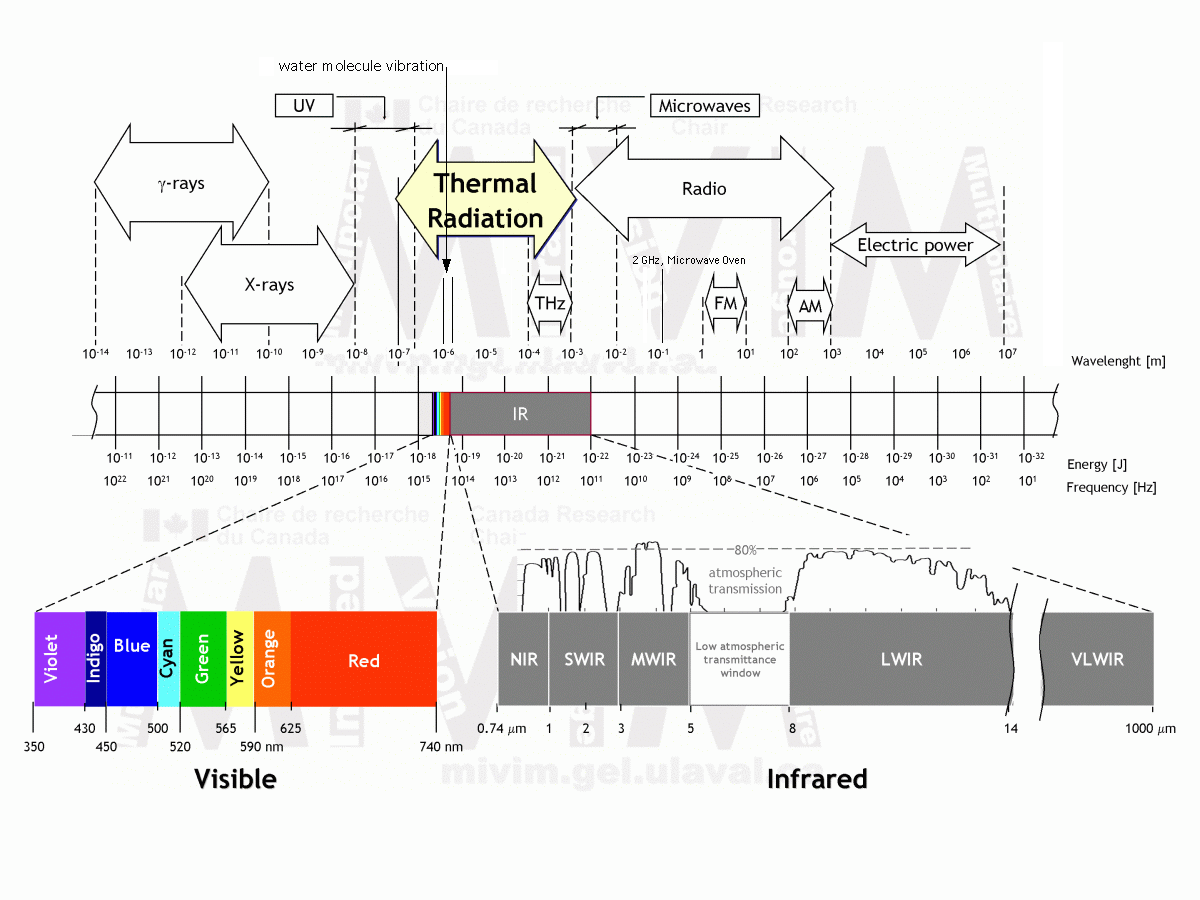
Electromagnetic Radiation and Microwave Ovens
- compiled by copying from the Internet -

Source: ?

Source: Wikipedia
Water Molecule Vibration Modes

Source: Water Absorption Spectrum in "Water Structure and Science" by Martin Chaplin
From Wikipedia, the free encyclopedia
Molecular rotation occurs in materials containing polar molecules having an electrical dipole moment, with the consequence that they will align themselves in an electromagnetic field. If the field is oscillating, as it is in an electromagnetic wave or in a rapidly-oscillating electric field, these molecules rotate continuously aligning with it. This is called dipole rotation. As the field alternates, the molecules reverse direction. Rotating molecules push, pull, and collide with other molecules (through electrical forces), distributing the energy to adjacent molecules and atoms in the material. Once distributed, this energy appears as heat.
From Wikipedia, the free encyclopedia
A microwave oven works by passing non-ionizing microwave radiation through the food. Microwave radiation is between common radio and infrared frequencies, being usually at 2.45 gigahertz (GHz) - a wavelength of 122 millimetres (4.80 in) - or, in large industrial/commercial ovens, at 915 megahertz (MHz) - 328 millimetres (12.9 in).[10] Water, fat, and other substances in the food absorb energy from the microwaves in a process called dielectric heating. Many molecules (such as those of water) are electric dipoles, meaning that they have a partial positive charge at one end and a partial negative charge at the other, and therefore rotate as they try to align themselves with the alternating electric field of the microwaves.
Sometimes, microwave heating is explained as a resonance of water molecules, but this is incorrect:[11] such resonances occur only at above 1 terahertz (THz).[12]
Effects on food and nutrients
Several studies have shown that if properly used, microwave cooking does not change the nutrient content of foods to a larger extent than conventional heating, and that there is a tendency towards greater retention of many micronutrients with microwaving, probably due to the shorter preparation time.[23] Microwaving human milk at high temperatures is contraindicated, due to a marked decrease in activity of anti-infective factors.[24]
Any form of cooking will destroy some nutrients in food, but the key variables are
Nutrients are primarily lost by leaching into cooking water, which tends to make microwave cooking healthier, given the shorter cooking times it requires.[26] Like other heating methods, microwaving converts vitamin B12 from an active to inactive form. The amount inactivated depends on the temperature reached, as well as the cooking time.
The higher rate of loss is partially offset by the shorter cooking times required.[27]
Version: 23. December 2012
Address of this page
Joachim Gruber